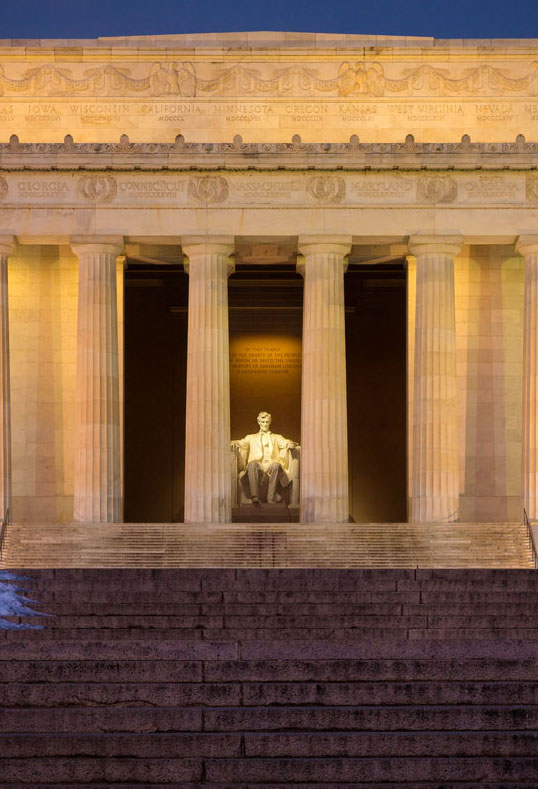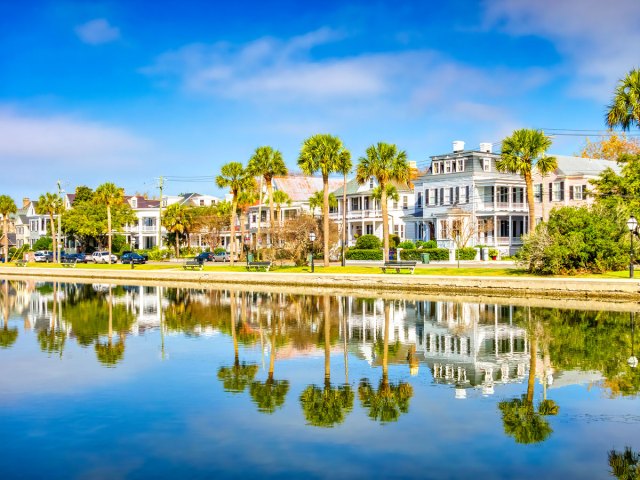A statue can often be more than just a monument — it’s a remembrance of a time in history, and how the past shapes the present and future. Many famous U.S. statues also come with a fascinating story, not only of how they came to be but also of why they remain important. Read on to learn the histories of six of the most famous U.S. statues, from the Statue of Liberty to the Lincoln Memorial.
Statue of Liberty – New York, New York
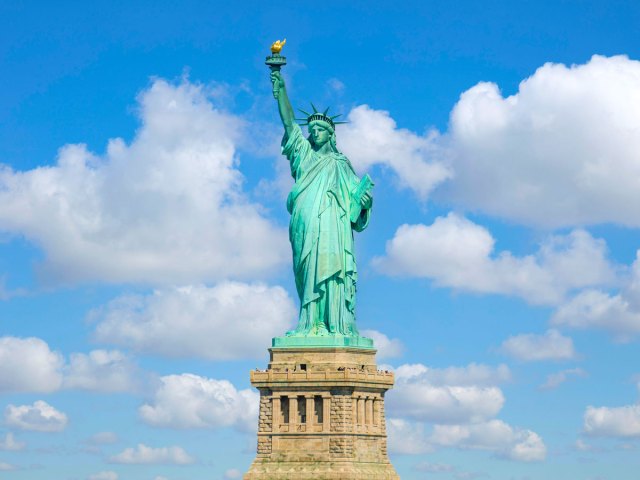
From conception to dedication, it took 21 years for America’s most famous statue to come to fruition. A French political intellectual and activist named Edouard de Laboulaye first proposed the concept for the statue in 1865, and it was later built by French sculptor Auguste Bartholdi as a gift from France to the U.S. On an 1871 trip to the States, Bartholdi chose Bedloe’s Island as the ideal site for his creation, as it was visible to all ships entering New York Harbor — effectively making it the gateway to America.
Officially entitled “Liberty Enlightening the World,” the Statue of Liberty stands 306 feet high, including its 154-foot pedestal that took two years to complete. Ever since its official dedication in 1886, the statue has been one of New York City’s most emblematic landmarks, drawing 3.1 million visitors in 2022. A trip to Lady Liberty’s crown requires 354 steps to the top, the equivalent of 20 flights of stairs.
Atlas – New York, New York
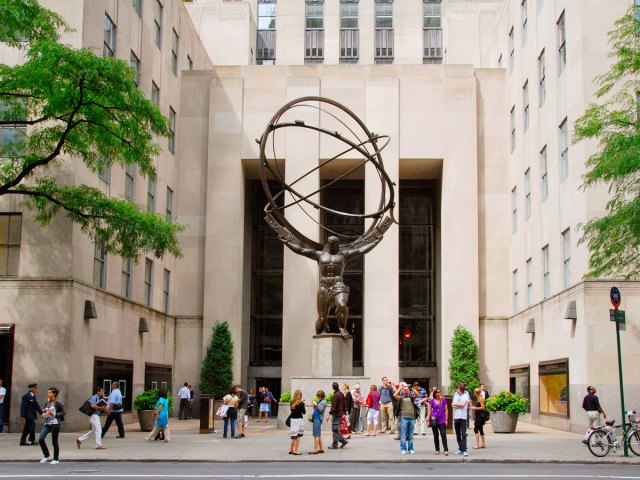
Located in front of New York’s famed Rockefeller Center, this impressive bronze statue rises 45 feet high, roughly the height of a four-story building. Designed by Lee Lawrie and modeled by Rene Chambellan, the statue was dedicated in 1937 and depicts the mythological figure of Atlas. Half-man, half-god, the Titan was integral in the war against the Olympians for control of the universe. After losing, Zeus condemned Atlas to hold the weight of the world on his shoulders for the rest of eternity.
As a nod to Greek mythology and the enormity of the cosmos, the statue is adorned with glyphs representing the planets. The message of Atlas’ struggles was very much aligned with the strains of the nation during the Great Depression. However, Atlas’ chiseled strength and everlasting endurance were also believed to be representative of the grit of the Rockefeller family and their lasting legacy.
Christ of the Ozarks – Eureka Springs, Arkansas

Climbing seven stories high, Christ of the Ozarks overlooks Eureka Springs, a city known for its well-preserved Victorian architecture. The inspiration behind the 67-foot-high statue came from Christ the Redeemer, the famous monument depicting Jesus Christ on top of Rio de Janeiro’s Corcovado Mountain. Standing 31 feet shorter than its inspiration, the Christ of the Ozarks is perched at an altitude of 1,500 feet on Arkansas’s Magnetic Mountain.
Proposed by Gerald Smith and built by Emmet Sullivan, an apprentice to one of Mount Rushmore’s sculptors, the monument was commissioned by the Elna M. Smith Foundation. Weighing 2 million pounds, the smooth-stone statue required 340 tons of concrete and 24 layers of mortar. Since its dedication in 1966, it draws more than half a million people a year, making it one of the most-visited monuments in the Ozarks.
Lincoln Memorial – Washington, D.C.
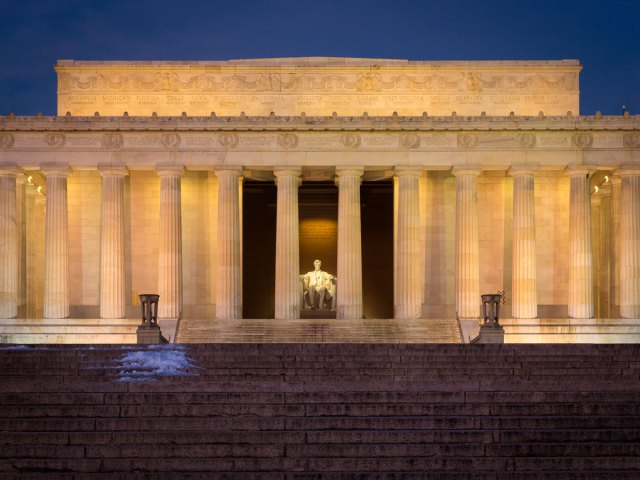
The idea behind the Lincoln Memorial — one of the most recognizable statues in the U.S. — started soon after the 16th President’s assassination in 1865. As the nation was reeling from Lincoln’s untimely death, two groups assembled to begin planning how to memorialize the deceased President. Charlotte Scott, a Black woman born into slavery, led one such group, which collected enough funds from Black Americans to build the Emancipation Statue in 1876 in the Capitol Hill neighborhood of Washington, D.C.
Other plans eventually led to the Lincoln Memorial, which didn’t open to the public until 57 years after the President’s assassination. After decades of navigating red tape, including fighting for the approval of Congress and waging an internal debate over the memorial’s location in a swamp, the impressive monument was finally dedicated in 1922. Today, the 19-foot-tall replica of Lincoln is the busiest memorial in Washington D.C., with 6 million visitors each year.
The Library Lions – New York, New York
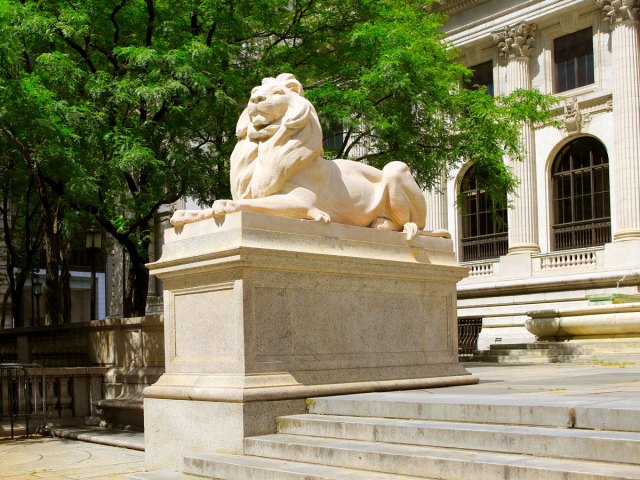
There may be no New York statue more beloved than the Library Lions. These behemoths have guarded the main steps of the New York Public Library since the institution’s official dedication in 1911. Sculptor Edward Clark Potter was responsible for the lovable lions, but it was New York Mayor Fiorello LaGuardia who named them Patience and Fortitude in the 1930s to represent the strength and resilience of New Yorkers in the face of the Great Depression. Augustus Saint-Gaudens, a preeminent American sculptor at the turn of the 20th century, recommended Potter for the project due to his specialization in molding animal subjects.
Modeled by Potter and carved by the Piccirilli brothers, the lions are made of Tennessee marble and have long since been the trademarked mascots of the New York Public Library. The lions are often decorated in observance of the season — winter wreaths during the holidays, florals in the spring, graduation caps during commencement, and various sports memorabilia depending on which teams are on a winning streak.
The Spirit of Detroit – Detroit, Michigan
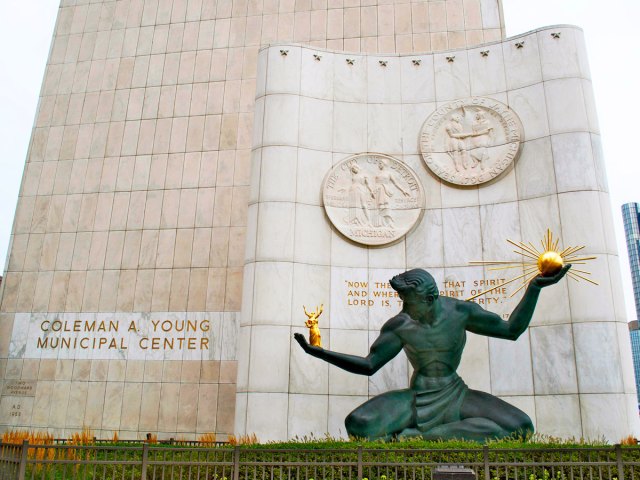
Situated on the corner of Woodward Avenue and East Larned Street, the Spirit of Detroit embodies the city’s fortitude. When the city commissioned Marshall Fredricks to build a sculpture inspired by hope and progress in 1955, the local artist waived his fee, as he believed honoring his hometown to be a part of his civic duty. The statue — informally named “The Spirit of Detroit” by locals — has since grown into a symbol of the Motor City, an image so iconic it’s found throughout the city.
The 60-ton bronze monument depicts a man balancing two entities in each hand. In his right hand, he holds a family (a symbol of the importance of relationships), while his left hand contains a golden orb (representing divinity). Today, it is one of the most photographed landmarks in Detroit and has become synonymous with the city itself, representing Detroit’s resilience, hope, and enduring strength throughout the years.
More from our network
Daily Passport is part of Inbox Studio, which publishes content that uplifts, informs, and inspires.






